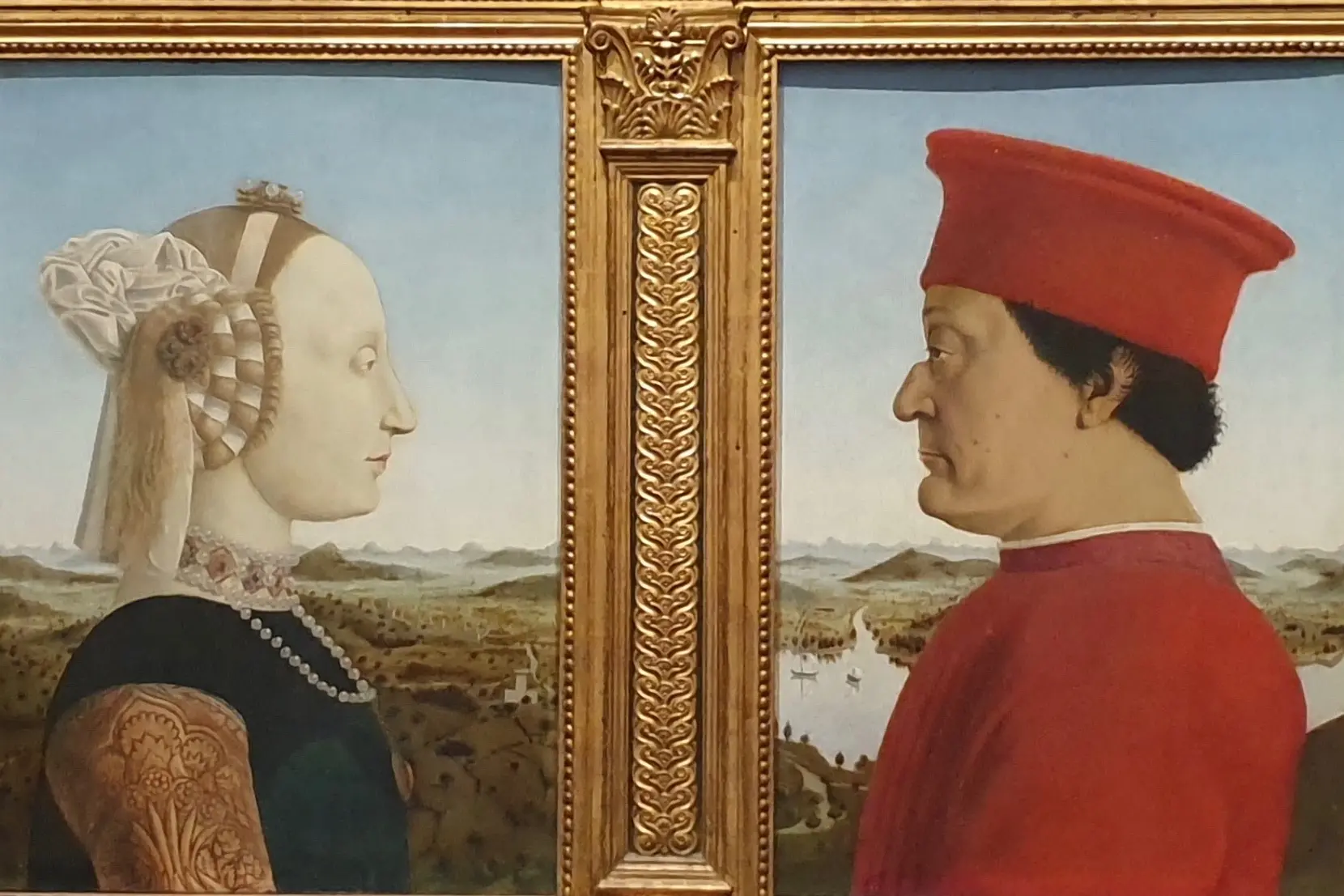The secrets of works of art
In Costantino D'Orazio's book, an in-depth look at the mysterious language of great artistsPer restare aggiornato entra nel nostro canale Whatsapp
Great artists have always spoken with images, rather than words. Let's take an example to understand: in the Middle Ages, pictorial cycles and sculptures were not works of art. They were "books" of color and stone. In its work of spreading Christianity, in fact, the Church had to deal with the widespread illiteracy of the population. Both among the nobility and among the people, there were very few who knew how to read and write and the transmission of the Christian message had to pass through alternative channels. There were of course the words of preachers and priests, but nothing was more effective than images to involve the masses of illiterates. In short, art in the Middle Ages had to amaze and fascinate, but above all educate . It is good to remember that religious buildings in the Middle Ages were not just architectural structures, often imposing and made of stone, when the homes of the majority of the population were small and made of wood and straw. They all had a pictorial or sculptural decoration and they were not considered finished if this decoration was not completed. The iconographic program, in fact, could show very different themes, but it was designed to accompany the faithful on a path of spiritual growth. In the churches open to the public, the stories of the Bible and related to the Gospel stood out, or famous and edifying episodes from the lives of the saints. In this perspective, just to give an example, Giotto's fresco cycles in the Basilica of San Francesco in Assisi were born, all centered on the events of the founder of the Friars Minor.
However, in many of their works, artists have hidden details and enigmas that went well beyond the obvious educational and celebratory intentions of their works. This is what the art historian Costantino D'Orazio tells us in his Enigmi e misteri dell'arte (Piemme, 2025, euro 17.50, pp. 128) in which the secrets of twenty masterpieces that we all know a little are revealed .
Who is the Mona Lisa really? Why did Van Gogh paint only one white flower among many purple ones in the painting titled Iris? Why are there two versions of Leonardo's Virgin of the Rocks?
Sometimes in works of art we find enigmatic details: they are small mysteries scattered by artists in paintings. Faced with these mysteries, as D'Orazio explains, we must never stop in front of what we do not understand: it is always worth asking questions , especially if you are young.
An example of what D'Orazio helps us discover can be found in a seemingly simple painting to interpret: the Double Portrait of the Dukes of Urbino, with the portraits of the spouses Federico da Montefeltro and Battista Sforza, a work by Piero della Francesca dating back to around 1465-1472, and preserved in the Uffizi Gallery in Florence . If you look closely at this painting, however, some questions arise. You begin to wonder why the two spouses, instead of being side by side, are facing each other, separated by a frame, and are painted in profile. Well, they are in profile because in the Renaissance, important people loved to imitate the depictions of Roman emperors printed on medallions and coins. Profile, as D'Orazio explains, "had become synonymous with power, importance, nobility . Furthermore, profile allows one not to reveal any emotion, so as to show the dukes as divinities devoid of feelings." Always looking at the painting we notice that the duke is tanned, while his wife has very white skin. This is because the darker skin indicated that the duke was a leader, who had spent part of his life under the sun , outdoors, on the battlefields . Battista Sforza instead showed the milky skin of someone who was noble and had no need to expose himself to the sun to work. If we then look at the clothes of the ducal couple we see that he is dressed in red, the symbolic color of imperial power while the duchess has a black dress, in which the sleeve embellished with embroidery stands out. This is because in the Renaissance the sleeves were the most precious part of the ladies' clothes and could be detached and replaced depending on the occasion and the pomp that one wanted to show. In short, how many questions and how many surprising secrets and in just one painting.
